Keyboard Command Research
a.k.a. "Strange things I like to do in my spare time."
Between work and family and the hundred other things I like to do, I do not always get the time I might like to play video games. As such, learning and relearning commands from this game to that (with possibly large time lags between) can be a tiny bit annoying as well as slowing down the precious gaming time. Thus, one thing I did to help combat this was to create a MS Word template for printing out my own reference sheets. I chose Word versus a drawing program because the table cells were adequate for representing the keyboard and Word documents are easy to edit.
I find myself to be far more of a social gamer than I am a solo gamer and this was just another activity that kept me occupied between gaming that could help social time go smoother.
One side affect of this activity was the quest for keyboard layouts that were the easiest to remember -- not only in a short time from cold start -- but also from game to game. (Also, as a developer, finding intuitive keyboard navigation and control is simply important to me -- even in today's click-a-licious programs.)
As you can see from the layouts shown below from 2001, I evolved from my own preference for diamond-shaped arrow key layout (due to growing up on XT keyboards with a number pad but no separate navigation arrows) to the inverted tee (WASD arrows). I made this change because a bit of research revealed that this is where most gamers preferred to keep their left hand. (My preference would be to always keep my index finger on the F key but, oh well.) Thus, for the sake of myself when adapting to a new game that will likely already have WASD defined, and for the sake of my guests, I gave in to the WASD layout and dumped my ESFC layout. This also changed the primary left-hand action key from D (the center of the diamond) to the space bar.
In the Rainbow Six examples below, I also spent a good deal of time moving the other commands from their acronymic positions to logically and blindly reachable positions or other mnemonic positions. Then I took it a step further and integrated the layout from the sequel, Rogue Spear (which had already adopted WASD), into Rainbow Six's layout to minimize the learning between games.
So what's the moral of this story? Always be evolving, I suppose.
For more odd things I've done for video gaming, follow these links:
My contribution to classic gaming: Searching for 4.77 MHz
My contribution to rally simulators: Fixes for running Mobil 1 on XP
My contribution to early Windows games: Fixing Up Old (Sierra) Computer Games
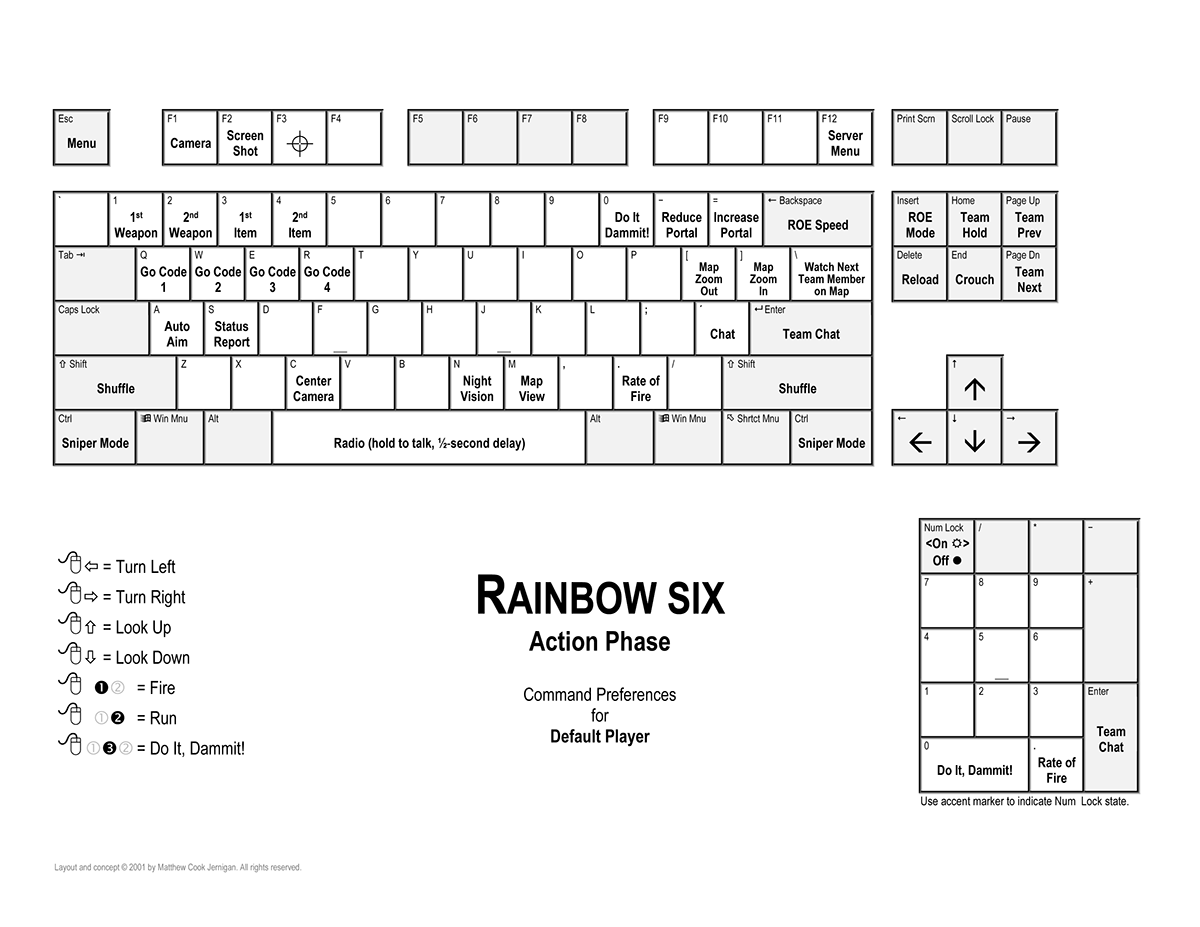
The default keyboard layout for Rainbow Six.
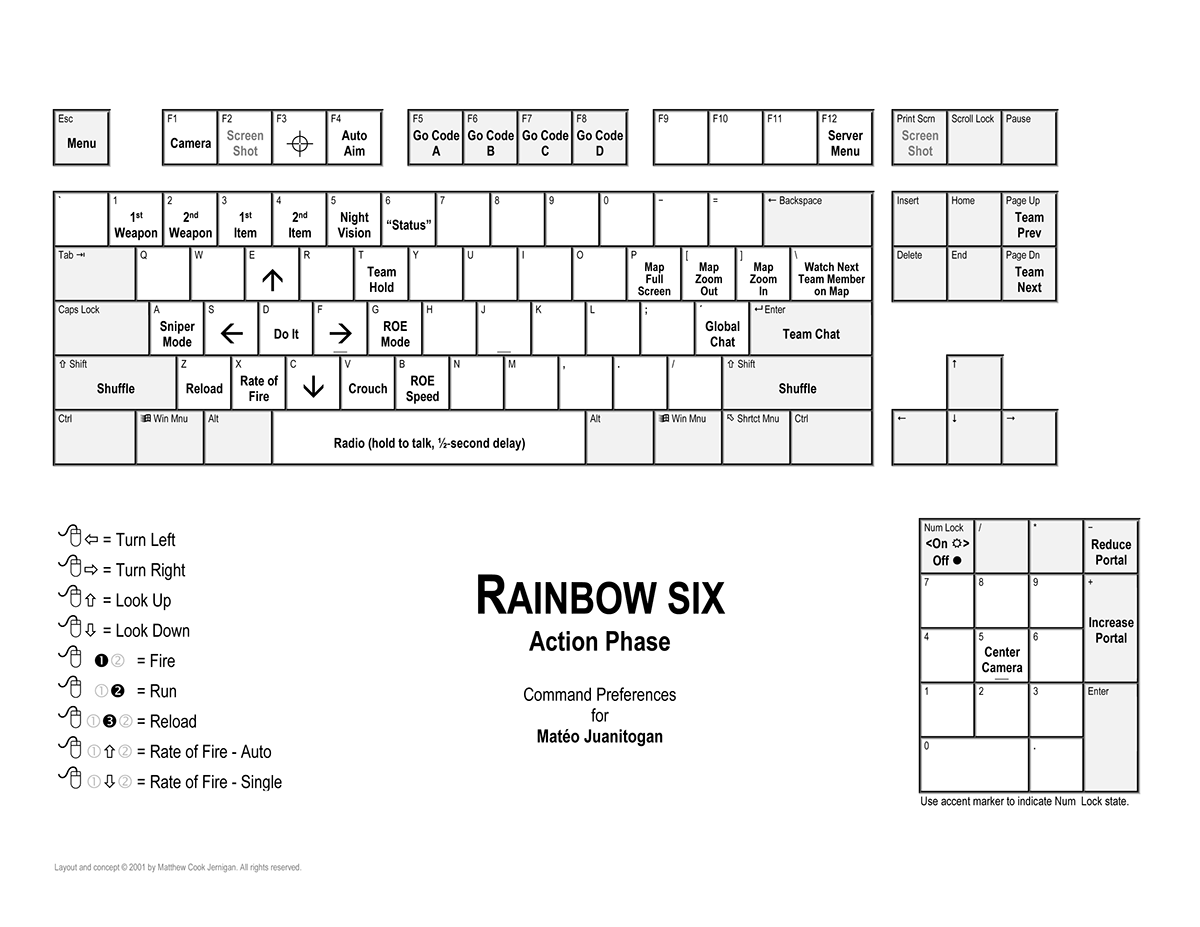
My original custom layout for Rainbow Six (I also had Rogue Spear configured similarly at the time which explains the undefined W and R keys).
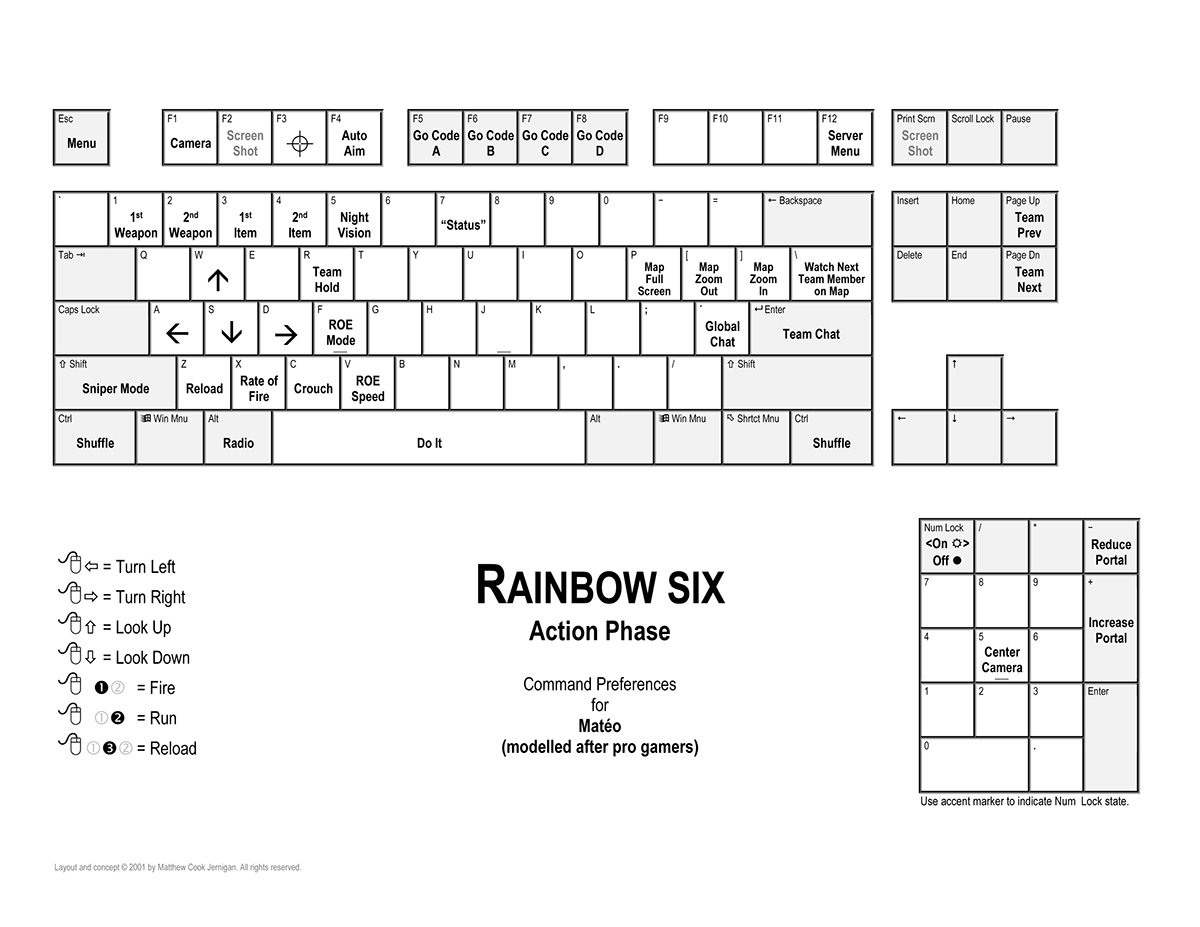
My custom layout for Rainbow Six after switching to WASD arrows.
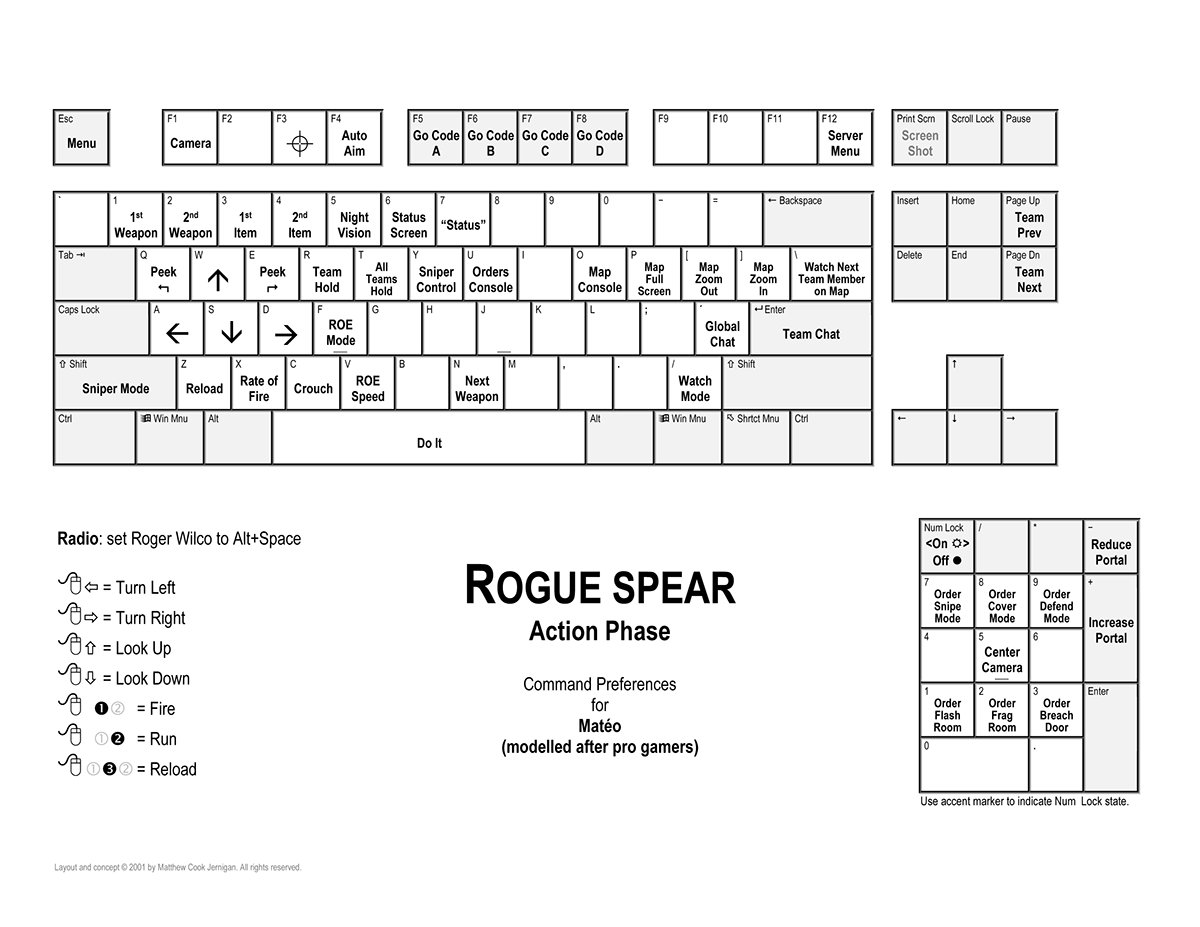
My custom layout for Rogue Spear after finally adopting WASD arrows.
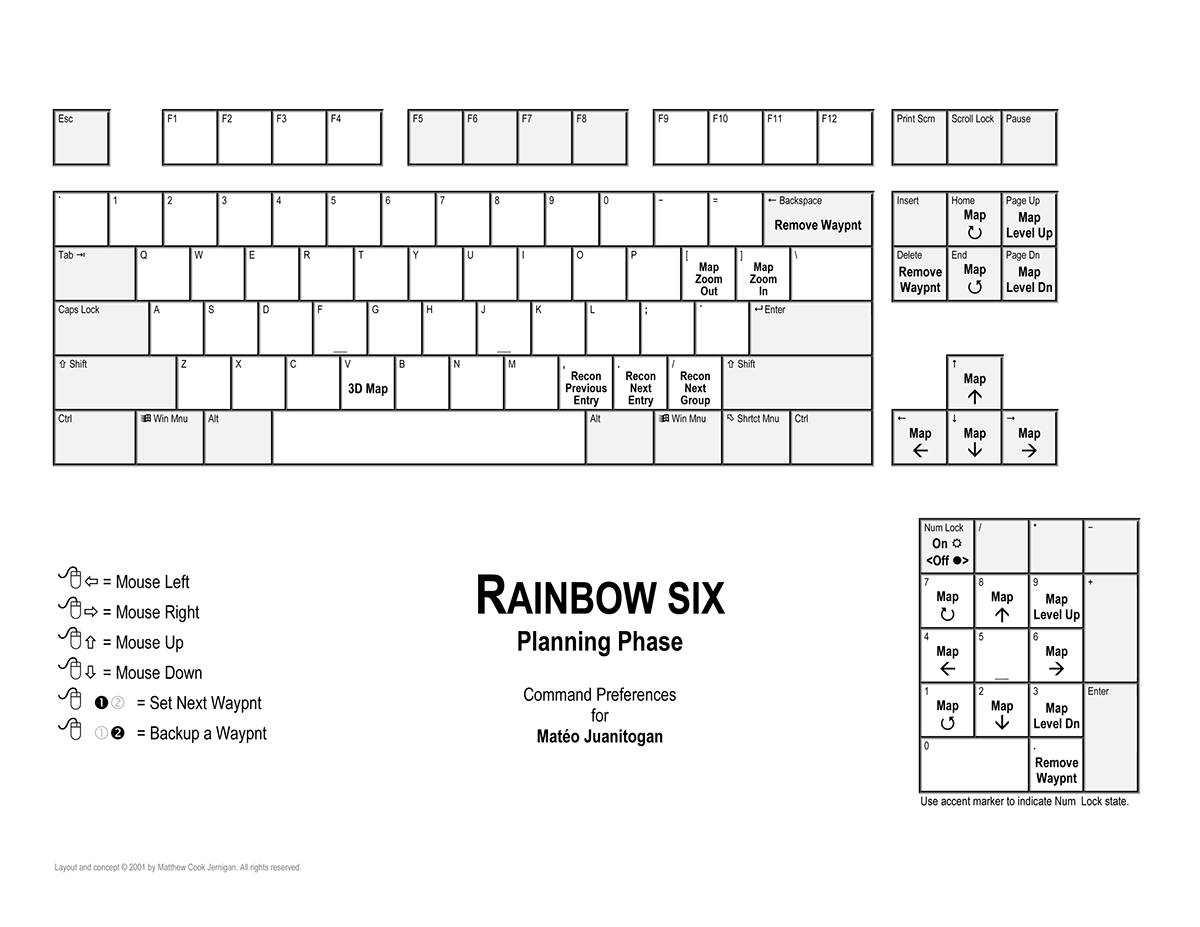
Rainbow Six and Rogue Spear require more than one keyboard layout.

